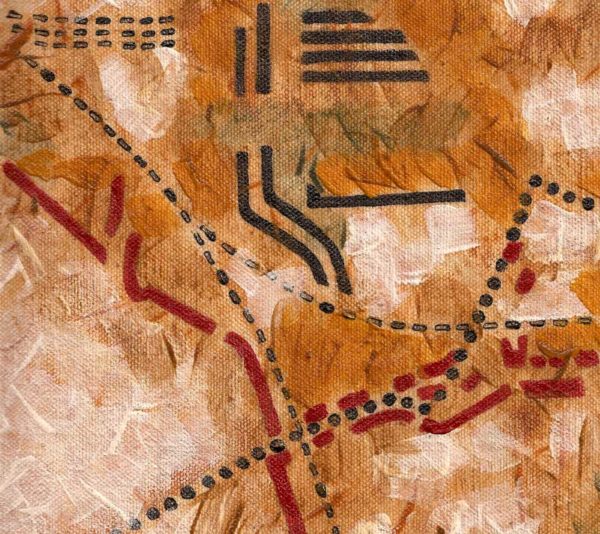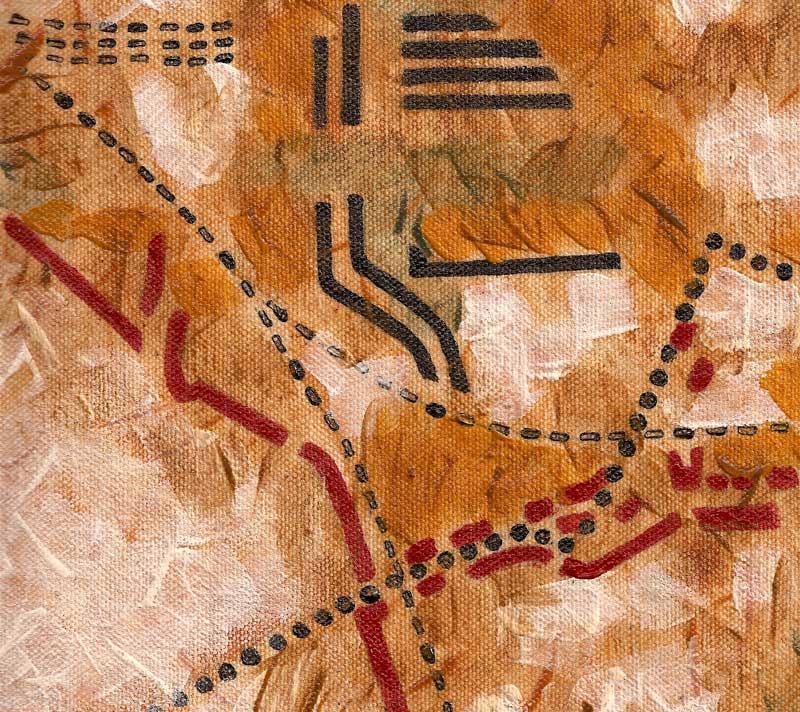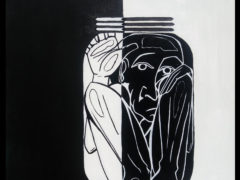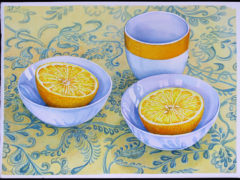
“Booth & Blitz” – Bryan Maycock
Inspired by Charles Booth’s Poverty map of London (1889) and the London Fire Brigade’s map of bomb damage (1941), Bryan Maycock exhibits a series of 10 works layered in medium and meaning. While each Booth or Blitz work signifies an area of London particular to Maycock’s family history, his contribution has been to bring together canvas, paint, wax, paper, glass and wood in ways that produce objects whose identities are essentially abstract. In their final manifestation, scraps of topographical information are now little more than meeting places for marks and materials. Booth & Blitz is on view in the Corridor Gallery October 4 – 28, 2016.

Image courtesy of the artist.
Describing the work on view, Maycock explains:
The threads that connect the two series of mixed media ‘objects’ are mapping, methods and me. Maps and mapping have permeated much of my work for some time. In research, I have used Victorian urban maps to identify the environments in which my ancestors lived and worked. These maps started as a source of information, but became a source of motivation. I liked the look and ‘feel’ of them and decided to find ways to incorporate them into my work. But, as it happens, Booth & Blitz is not based on those particular maps.
In Charles Booth’s Poverty map and the London Fire Brigade’s map of bomb damage, I encountered something else. Not only was there information about social structure, but the way information was conveyed as colour-coded blocks reminded me of the conceptual Systems artists who produced work in the late 1960s early 1970s – a period key to my own development. In much the same way as Booth and the fire brigade used colour-coded data to populate the surface of their maps, so Systems artists used data to actually generate their work. For me, this association opened the door to further levels of abstraction.
Bryan Maycock is a Dartmouth-based artist. He was born in Newmarket, England and graduated from Bath Academy of Art where he studied painting, photography and education. After emigrating to Ontario he worked as an education curator, taught and was founding president of the White Water Gallery. In 1983 Maycock relocated to Nova Scotia. He completed an MA at NSCAD and, subsequently, administered and taught full-time in Foundation Studies until retirement in 2013. His connection to NSCAD continues as Research Fellow in the Drawing Lab that he co-founded with Dalhousie University psychologist, Raymond Klein. Maycock’s interests and work are multi-disciplinary in nature although, most recently, his focus has returned to painting. The threads and themes that have resulted in fourteen solo exhibits in public galleries have included such disparate subject matter as movement, genealogy, computers, compost and mapping. Aside from the solo exhibitions, Maycock’s work has been exhibited in group and juried shows across Canada and internationally, and he is represented in numerous public and private collections.
To see more of Maycock’s work please visit his website: http://www.bryanmaycock.com/
Located inside the Visual Arts Nova Scotia office at the Halifax Seaport since 2000, the Corridor Gallery is complimented by a historical legacy of Nova Scotia culture, simple yet modern architectural elements and an array of current cultural activity in the Cultural Federations of Nova Scotia office. The Corridor Gallery is located at 1113 Marginal Road, Halifax, Nova Scotia and is open Monday through Friday, 9:30am-5pm.
Visual Arts Nova Scotia advances the visual arts through leadership, education, and communication.
High resolution image for press available via Dropbox.
For further information regarding the exhibition contact:
Carri MacKay
Programming Coordinator
902.423.4694 | 1.866.225.8267 | f: 902.422.0881
vans@visualarts.ns.ca | www.visualarts.ns.ca



